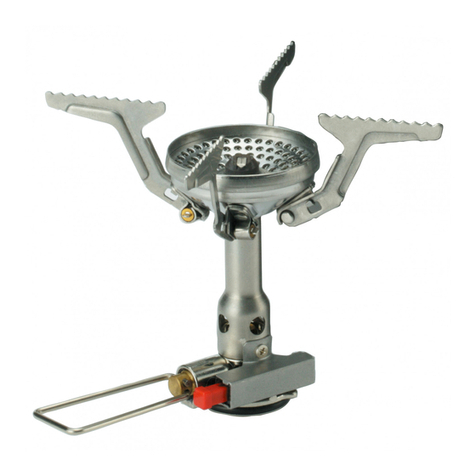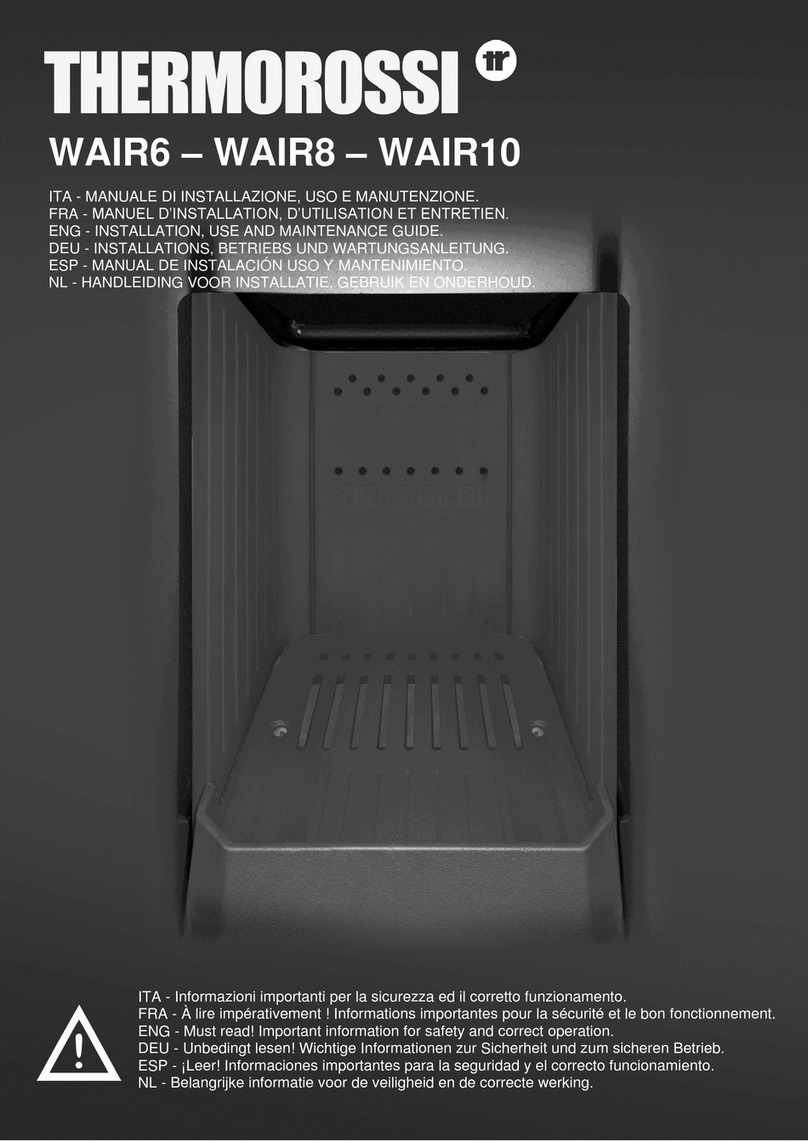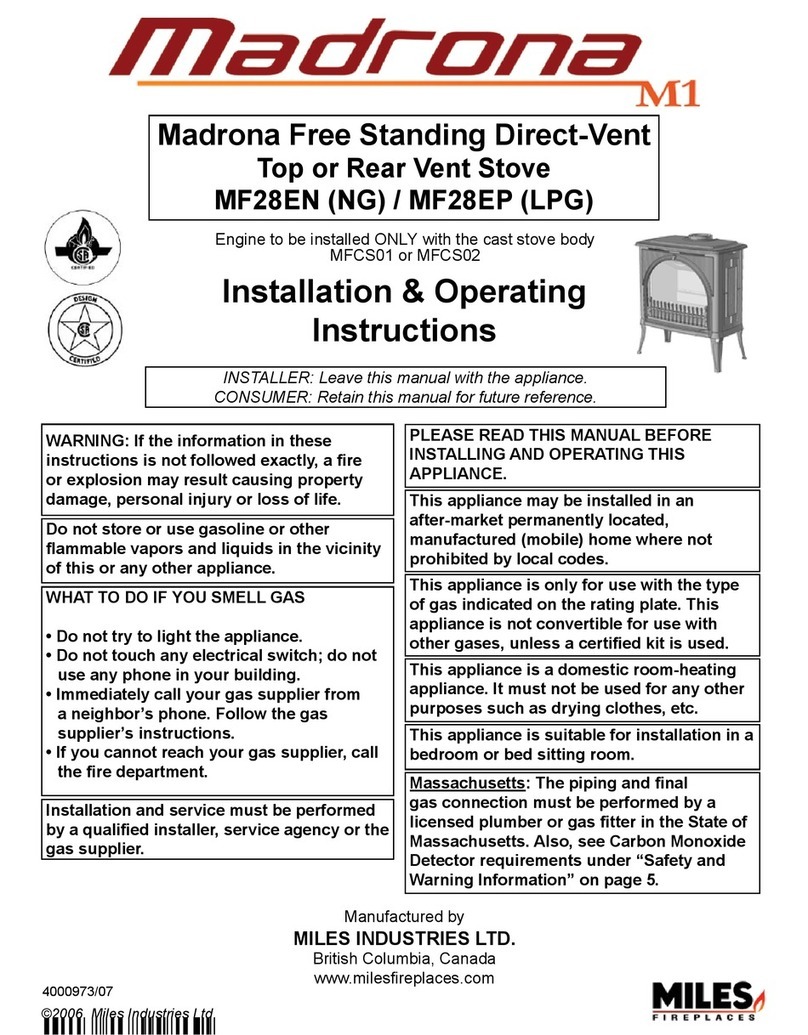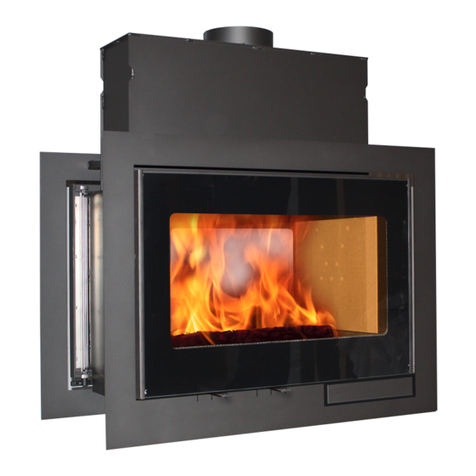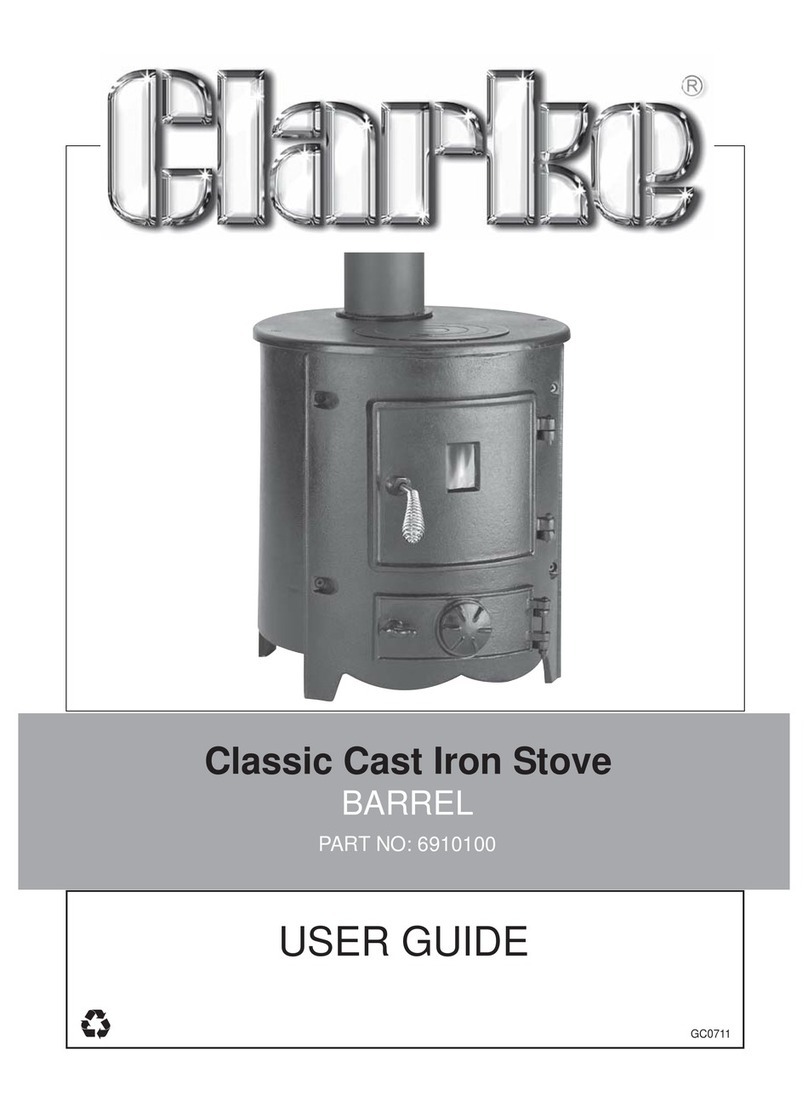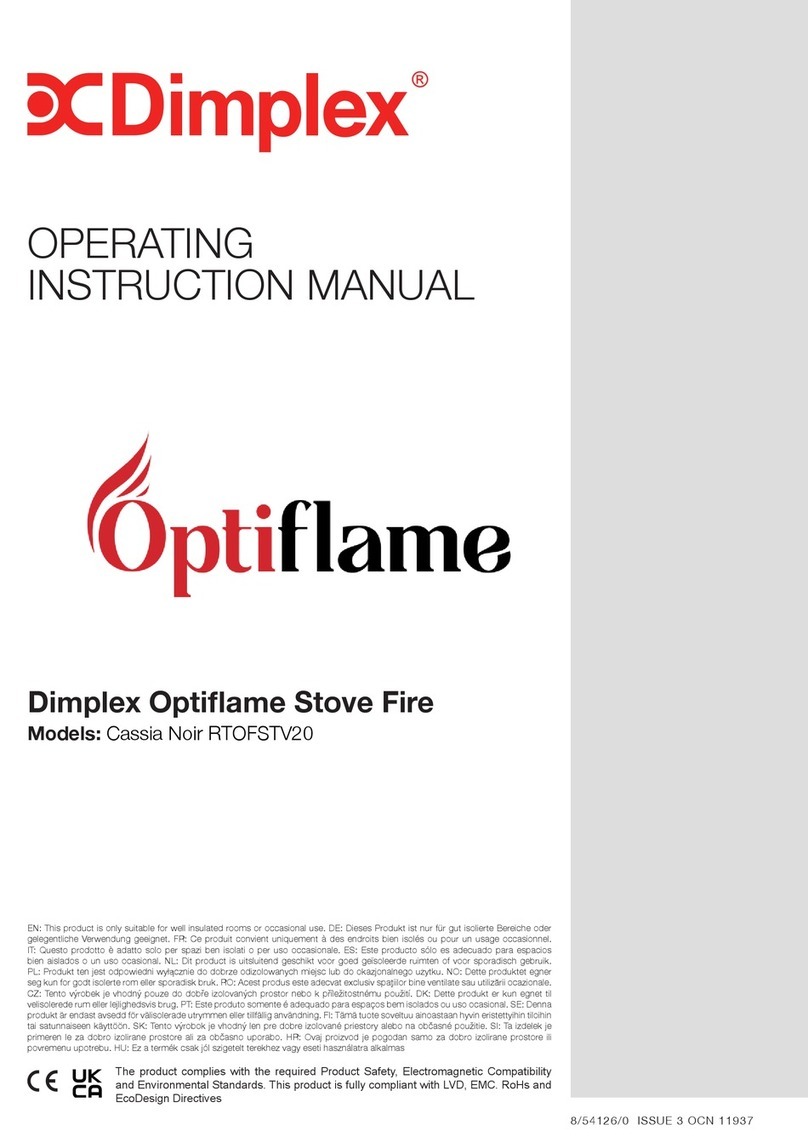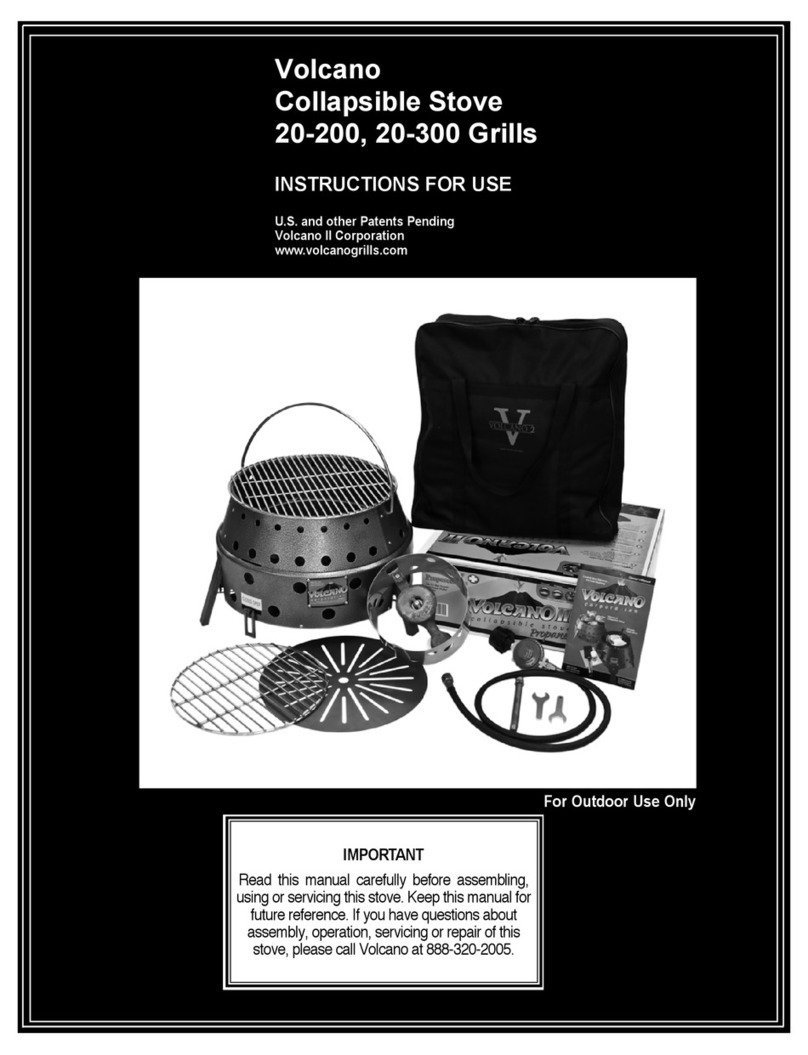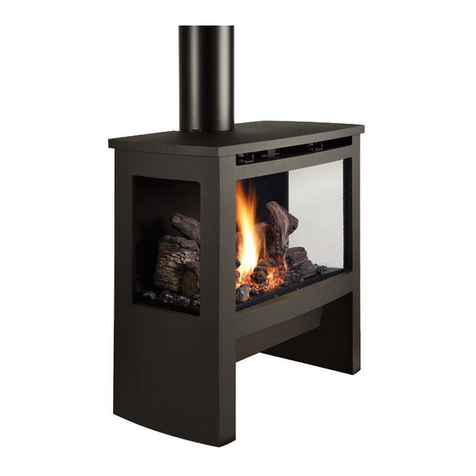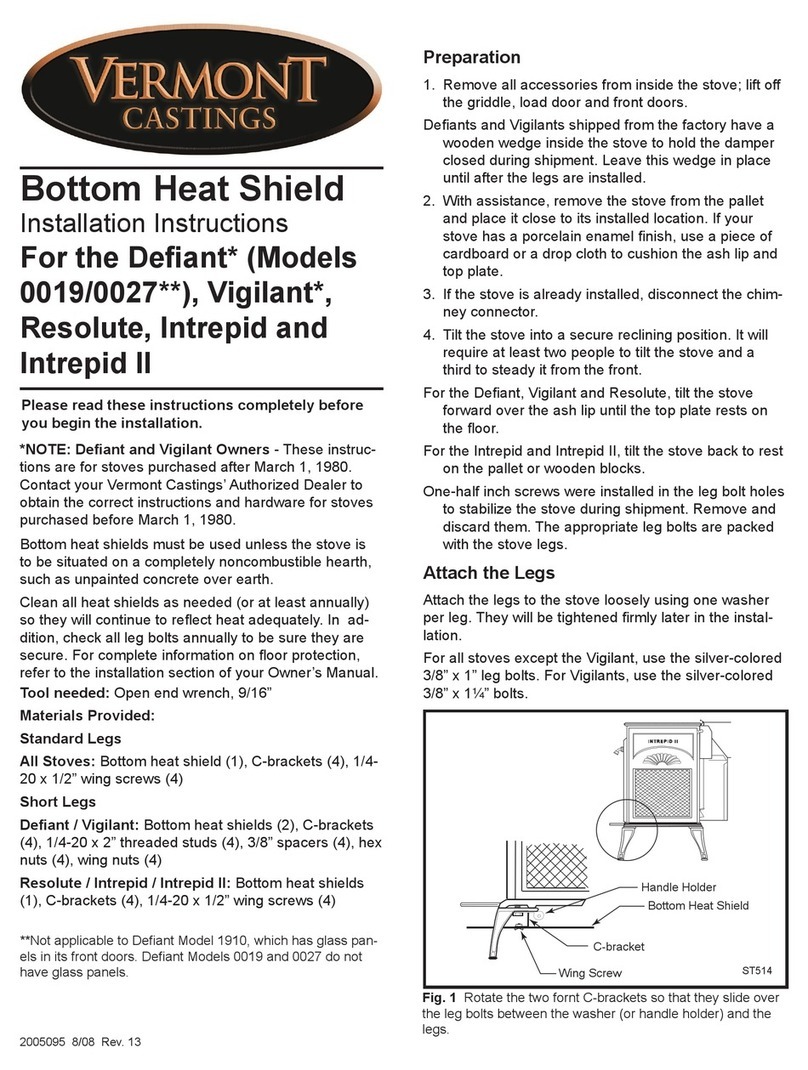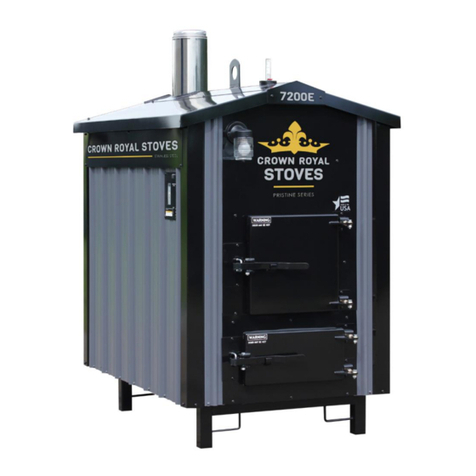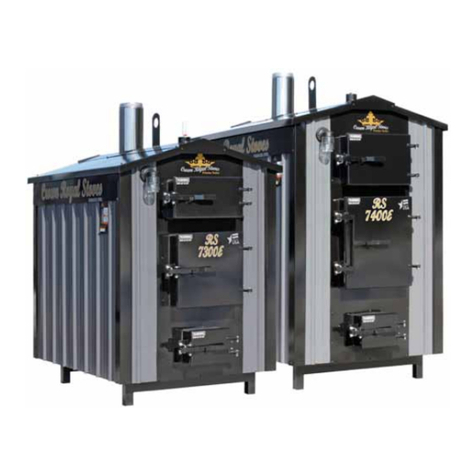
TRANSFER LINE –INSTALLATION
ALL INSTALLATIONS AND OPERATIONS MUST FOLLOW FEDERAL, PROVINCIAL, STATE, AND LOCAL CODES FOR WIRING, PLUMBING
AND INSTALLING THE CHIMNEY. ALL WORK MUST BE PERFORMED BY QUALIFIED PERSONNEL ONLY.
Underground insulated pipe is a crucial part of your installation. It is designed to transfer hot water from your furnace to your
home, garage or shop. Selecting the correct underground pipe depends on several factors such as climate and distance. Choosing a
pipe with the least possible heat loss is the most effective way to ensure your furnaces efficiency.
•Ridged Insulated Underground Tubing - Ridged insulated pipe manufactured with the highest possible R value ratings.
•Foam Filled Insulated Underground Tubing –Designed to respond to intensive environments and climates. Insulated with
high quality closed cell polyolfin or polyethylene foam and shelled in a virgin plastic corrugated tile.
Make sure your insulated underground tubing is equipped with at least one supply and one return pipe. This pipe should be at least
one inch inside dimension; which is rated at 180 degrees F and 100 PSI continuous flow.
Insulated underground tubing must be without any splices, couplings and joints. Both tubing and piping inside should be one
continuous run. Underground insulated tubing needs to be free of damages or punctures that would allow ground water or soil to
come in contact with inside insulation and piping. Allowing such contact will cause moisture to seep through the insulated pipe and
result in extreme heat loss. Insulated underground tubing must remain watertight or will be required to be replaced.
Installation Requirements:
•The trench must be 24” deep and 8”–12” wide. If possible, have a gradual slope in your trench to allow drainage away from
lines and out of the trench bottom. Place electrical supply in bottom of trench and cover with 6” of gravel or dirt. At this
point a water barrier is required. Several methods are possible, but the most important factor is; if ground water comes in
contact with your heating lines, it will be the greatest heat loss to your system. A minimum of R10 insulation value is
recommended, and a water-tight vapor barrier such as a continuous poly tube of plastic PVC pipe to encase your insulation
is a must. NOTE: If you need to bury lines under an area where vehicles will cross, you should increase the depth of the
trench to three feet or place planks over the trench in that area to spread the load and reduce the pressure generated on
the lines.
•All wiring must conform to local codes. Use an electrical wire rated and approved for underground installations. This
wiring can be placed in the same trench below the water lines. Use 12-2 UF wire with ground to provide power to the
combustion blower, aquastat, night light, etc. at the furnace. This is satisfactory for most applications, but a state certified
electrician must be consulted.
•The supply & return tubing and the power wire can be lowered in the trench, then brought through the buildings being
heated, and extended a minimum of 36” out of the soil where the furnace is to be placed. Seal the openings around the
tubing where it enters the building. Also Seal the tubing where it extends out of the ground at the location where the
furnace is to be placed.
•Connections to the furnace are clearly marked. The installation of isolation valves at both ends of the pump is
recommended as well as a valve at the return line. This will allow you to shut off the water supply for repair or if additional
heating components are added to the system. It is recommended that piping used is able to withstand 100 PSI at 180 F,
and is at least 1” (inch) in diameter. 1 ¼” (inch) piping is recommended for larger systems. A single junction box at the rear
of the furnace is included for your power supply and should be connected by a qualified person.
•A hole large enough to accommodate two lines and insulation is required and attention to sealing this point of entry is very
important. Be sure to bring pipes, insulation and vapor barrier completely through the wall and seal from both sides.




















